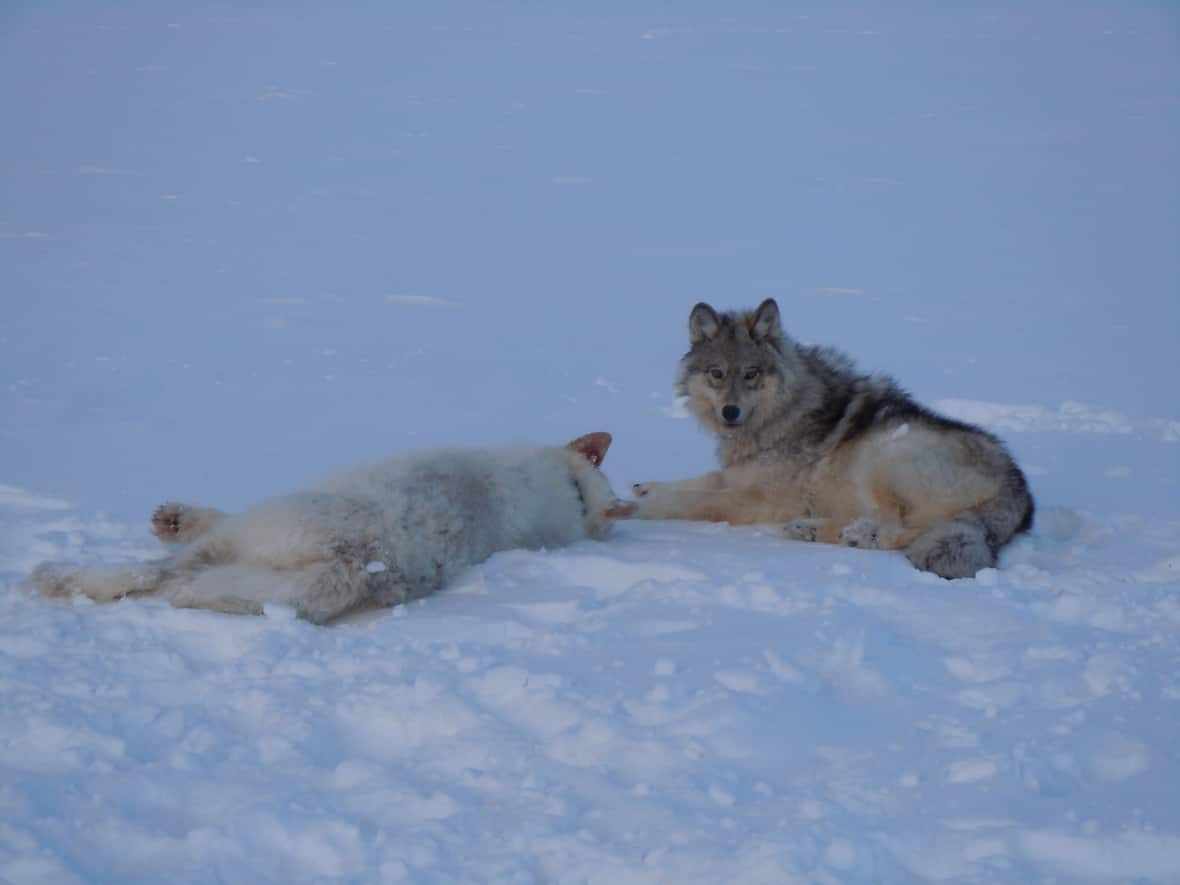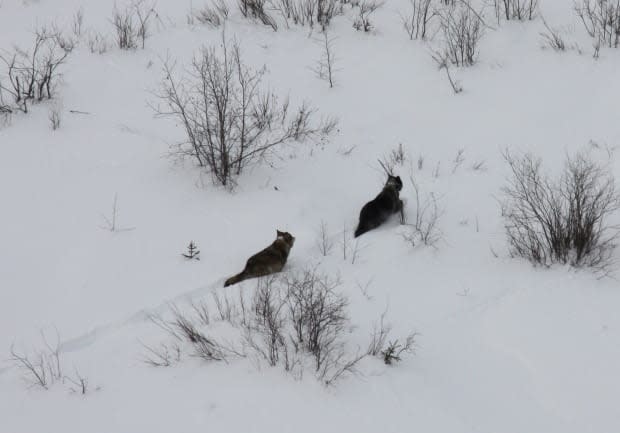N.W.T. aims to hit targets for wolf collaring program while calls to end the practice continue

The target for N.W.T. biologists is to get 30 wolves collared this year.
This is part of a project that launched in 2020 to track wolf numbers and migratory patterns in the Northwest Territories with the goal to get 10 wolves collared in each of the three packs.
However, that number is yet to be reached. The first year only 12 wolves were collared; in 2021 it increased to 19 wolves collared; and last year only seven wolves were collared.
"It's been frustrating because we haven't been able to get the collars out," said Dean Cluff, a wildlife biologist for the North Slave region with the N.W.T.'s Department of Environment and Natural Resources.
Some challenges include finding the wolves — the goal is to only collar one wolf from each pack — and the physical difficulties of the collaring process.
"They are predators, carnivores, you know, they don't want to be captured so they fight back — it's dangerous," Cluff said.

Currently the practice is to track down wolves via helicopter, capture them with a net, then secure the wolf's neck with a yoke-shaped brace so the collar can be slipped on. The whole process takes about 15 minutes.
Now, to reach the target number halfway through the project, biologists will be bumping up the number of capture sessions, trying to collar wolves again in the summer, and will also introduce chemical immobilization, such as tranquillizers.
But there are critics of the program.
'There's got to be another way'
Elder Margret McDonald from Norman Wells disagrees with collaring wolves, and all animals.
She referenced a memory from the late '70s when she harvested a black bear with a collar.
"When we took the collar off, the bear's neck was raw right to the bone, and, you know, my mom cried. She said that is a terrible way to treat animals," McDonald said.
Growing up with a trapper father, McDonald said she was taught to respect animals.
"He always said, if you mistreat animals that will come back to you," she said.
The satellite collars used for the wolf tracking program weigh about 880 grams each and collect location data up to five times a day.
McDonald called the collars "cumbersome."
"I just don't agree with it. There's got to be another way."
GPS collars most feasible
When it comes to collecting data, there are a couple of ways but not a lot that are feasible for wolves, Cluff said.
Other methods include implants, ear tags and the old radio collars used to track wolves, but they all have the same downside — close proximity is required to collect the data.
When a dog has a chip implanted, they can get scanned at the vet, Cluff explained, but it is more difficult to scan a wolf.
The GPS collars used in the current program transmit data to satellites, similar to cellphones, making the data accessible from the comfort of an office.

In terms of how the collars affect the animals, Cluff said the impact is minimal, noting he has observed wolves scratching their neck after being collared.
"There is no evidence of having a shorter lifetime or having an adverse life," he said.
The average lifespan of a wolf in the wild is five to six years, Cluff said, noting only adults are collared and after two years, the collars pop off.
Cluff acknowledges the criticism though.
"I understand there are concerns and we take them seriously," he said.
Wolves have died in the current project, but that was due to the handling process, Cluff said.
The project started as a way to find out where the wolves were and preliminary data is showing the wolves are following caribou migrations.
"We're trying to help with understanding the movements of the ecology of the wolf but also potentially help in counting them," Cluff said.
The project is slated to wrap up in 2025.

 Yahoo Movies
Yahoo Movies 
